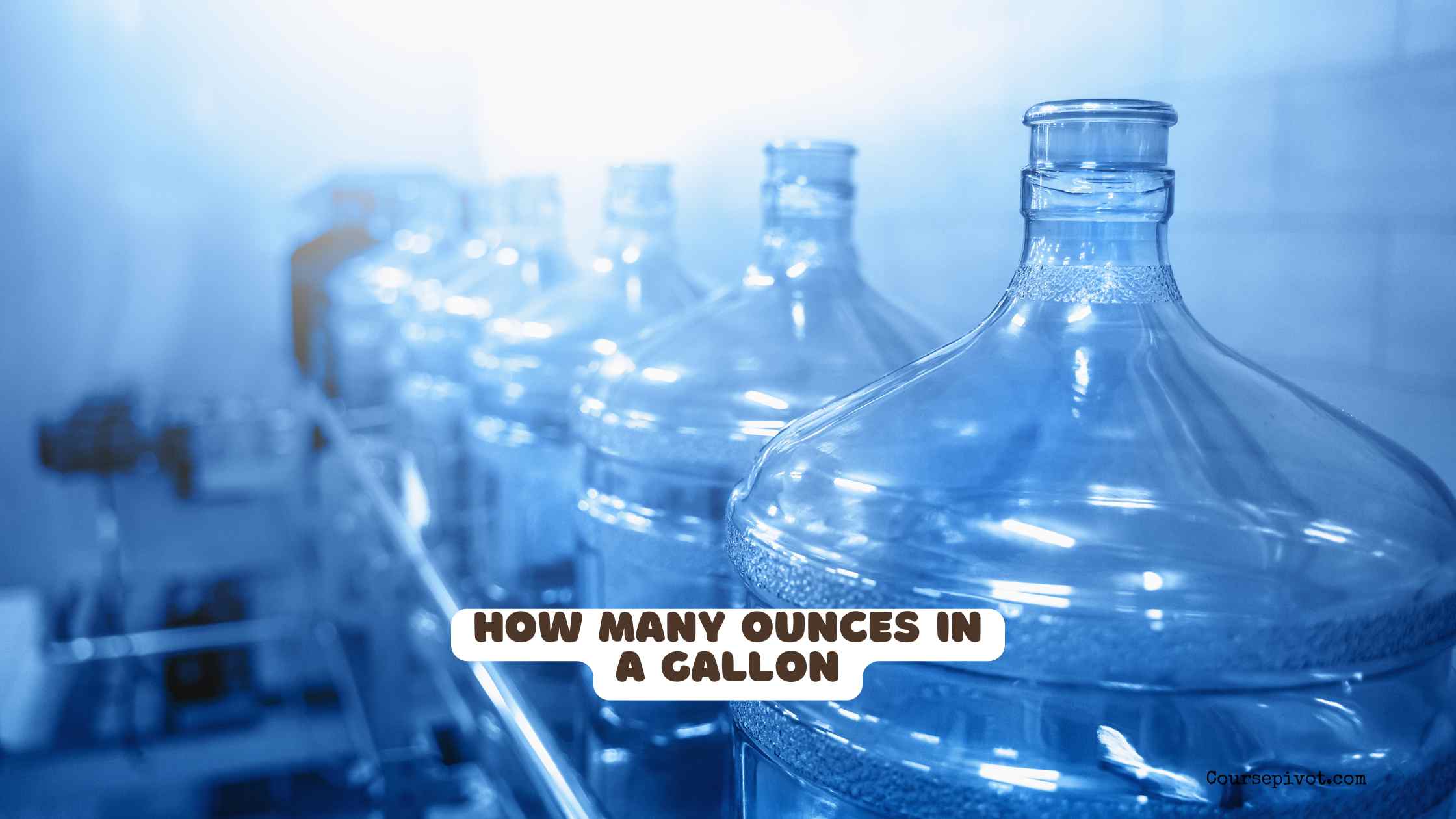
How Many Ounces in a Gallon?
Whether you’re cooking, mixing drinks, or handling a science project, knowing how many ounces are in a gallon can save you from a measurement mishap. This seemingly simple question pops up in kitchens, classrooms, and even industrial settings, but the answer depends on which system you’re using—U.S. or U.K. This blog breaks down the conversion clearly, explores why it matters, and offers practical tips to make it stick. Let’s dive into the math and clear up any confusion.
Table of Contents
The Straight Answer: Ounces in a Gallon
In the U.S. customary system, widely used in the United States, there are 128 fluid ounces in a gallon. This is the standard for most American recipes, fuel measurements, and everyday liquid needs.
In the U.K. imperial system, used in the United Kingdom and some Commonwealth countries, a gallon holds 160 fluid ounces. This difference stems from the imperial gallon being larger than the U.S. gallon.
Since most readers are likely in the U.S., we’ll focus primarily on the U.S. system but include U.K. details for clarity.
Breaking Down the Math
To understand the conversion, let’s look at how a gallon is defined:
- U.S. Gallon: 1 U.S. gallon = 128 U.S. fluid ounces. This comes from the fact that 1 gallon = 4 quarts, 1 quart = 2 pints, 1 pint = 2 cups, and 1 cup = 8 fluid ounces. So:
4 quarts × 2 pints × 2 cups × 8 ounces = 128 ounces. - U.K. Imperial Gallon: 1 imperial gallon = 160 imperial fluid ounces. The imperial gallon is about 20% larger, so the math scales up: 1 imperial gallon ≈ 4.546 liters versus the U.S. gallon’s 3.785 liters.
For example, if you’re filling a 1-gallon jug with water in the U.S., you’re pouring 128 ounces. In the U.K., that same jug would hold 160 ounces if measured by imperial standards.
Why the Difference Matters
Mixing up U.S. and U.K. measurements can lead to errors, especially in:
- Cooking and Baking: A recipe calling for a gallon of milk will yield different results if you use 160 ounces instead of 128.
- International Travel: Buying fuel or liquids abroad might confuse you if you’re used to U.S. gallons.
- Science and Industry: Precise measurements are critical in labs or manufacturing, where ounces and gallons must align with the correct system.
For instance, a U.S. bartender mixing a large batch of punch needs exactly 128 ounces per gallon, while a U.K. chef might overpour if using imperial ounces without converting.
Practical Applications
Knowing the ounces-to-gallon conversion is handy in everyday scenarios:
- Cooking Large Batches: Making soup for a crowd? A gallon of broth is 128 ounces (U.S.), so you’ll know how many servings you’re prepping.
- Hydration Goals: If your water bottle holds 32 ounces, you’d need to refill it four times to hit a gallon (128 ÷ 32 = 4).
- Fuel and Liquids: Gas stations sell fuel by the gallon in the U.S., so understanding 128 ounces helps visualize quantities in smaller containers.
Conversion Quick Reference
Here’s a handy table for clarity:
| System | 1 Gallon Equals | Liters (Approx.) |
|---|---|---|
| U.S. Customary | 128 fluid ounces | 3.785 liters |
| U.K. Imperial | 160 fluid ounces | 4.546 liters |
To convert between systems:
- U.S. to U.K.: Multiply U.S. ounces by 1.25 (128 × 1.25 = 160).
- U.K. to U.S.: Divide imperial ounces by 1.25 (160 ÷ 1.25 = 128).
Common Questions Answered
- How many 16-ounce bottles make a gallon? In the U.S., 128 ÷ 16 = 8 bottles. In the U.K., 160 ÷ 16 = 10 bottles.
- Is a gallon always liquid? Fluid ounces measure volume (liquids), not weight. A gallon of feathers weighs less than a gallon of water, but both are 128 ounces (U.S.).
- Why the U.S.-U.K. difference? Historical measurement systems diverged in the 19th century, with the U.S. adopting a smaller gallon based on the British wine gallon.
Practical Tips for Mastering the Conversion
Here’s how to make ounces-to-gallon conversions second nature:
- Memorize the magic number: Stick “128” (U.S.) or “160” (U.K.) in your head for quick math.
- Use a conversion tool: Apps like Unit Converter or a quick Google search can confirm calculations.
- Label your system: If cooking from a U.K. recipe in the U.S., note “imperial gallon” to avoid confusion.
- Practice with visuals: Fill a 1-gallon jug with 8-ounce cups (16 cups = 128 ounces) to see it in action.
- Double-check international recipes: Confirm whether the recipe uses U.S. or U.K. measurements before starting.
These tricks keep your measurements on point, whether you’re mixing drinks or fueling a car.
Things to Avoid
Don’t assume all gallons are the same—always clarify U.S. or U.K. when working with international sources. Avoid using weight ounces for liquid measurements; they’re different units. Don’t skip double-checking recipes or projects; a small mix-up can ruin a dish or experiment. Lastly, don’t rely on outdated conversion charts, as some older sources confuse the systems.
Tailoring to Your Needs
If you’re a home cook, focus on the U.S. standard (128 ounces) for most recipes. Travelers or expats in the U.K. should memorize 160 ounces for local use. Students in science classes can practice conversions to ace labs. Adjust based on your context—kitchen, travel, or academics—for seamless application.
Key Takeaways
The question how many ounces in a gallon has a clear answer: 128 fluid ounces in a U.S. gallon and 160 fluid ounces in a U.K. imperial gallon. This difference, rooted in historical systems, matters for cooking, travel, and science. By memorizing the numbers, using tools, and clarifying systems, you can avoid costly mistakes and apply the conversion confidently. Whether pouring a gallon of lemonade or calculating fuel, you’re now equipped to measure like a pro. What’s your next gallon-sized project?
Cite this article
You can copy and paste your preferred citation format below.
Martin, L. & Arquette, E.. (2025, September 30). How Many Ounces in a Gallon?. Coursepivot.com. https://coursepivot.com/blog/how-many-ounces-in-a-gallon/



